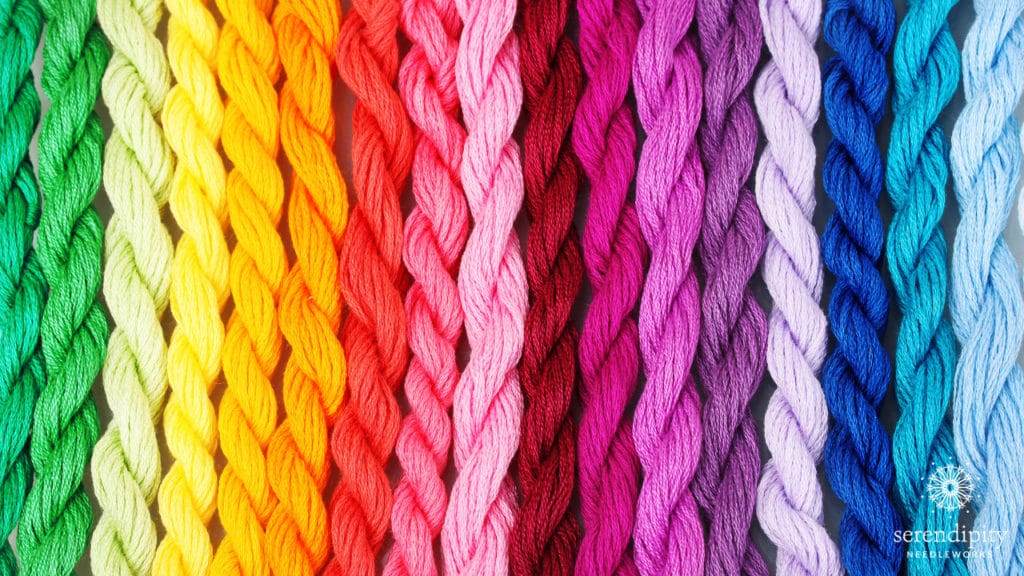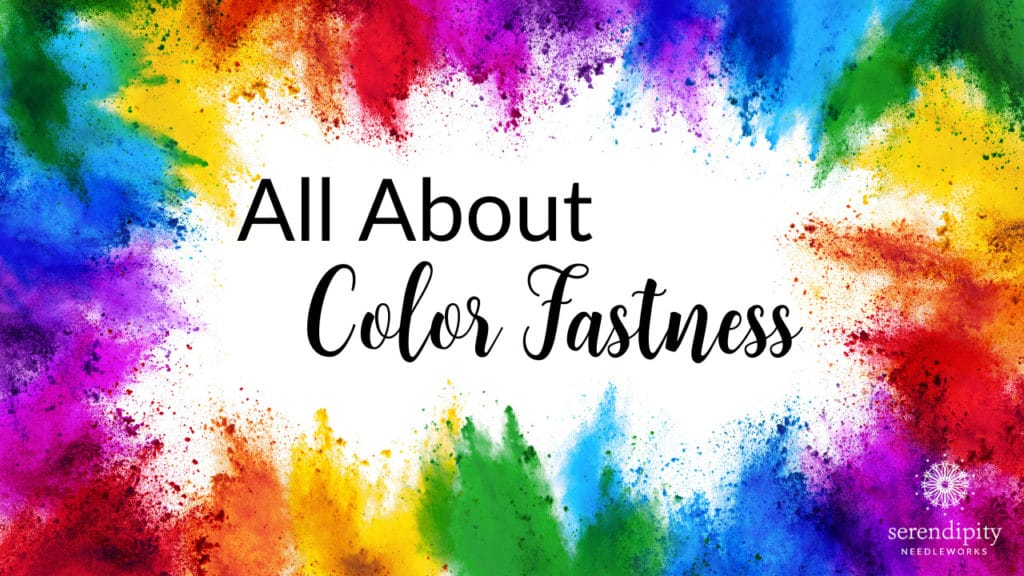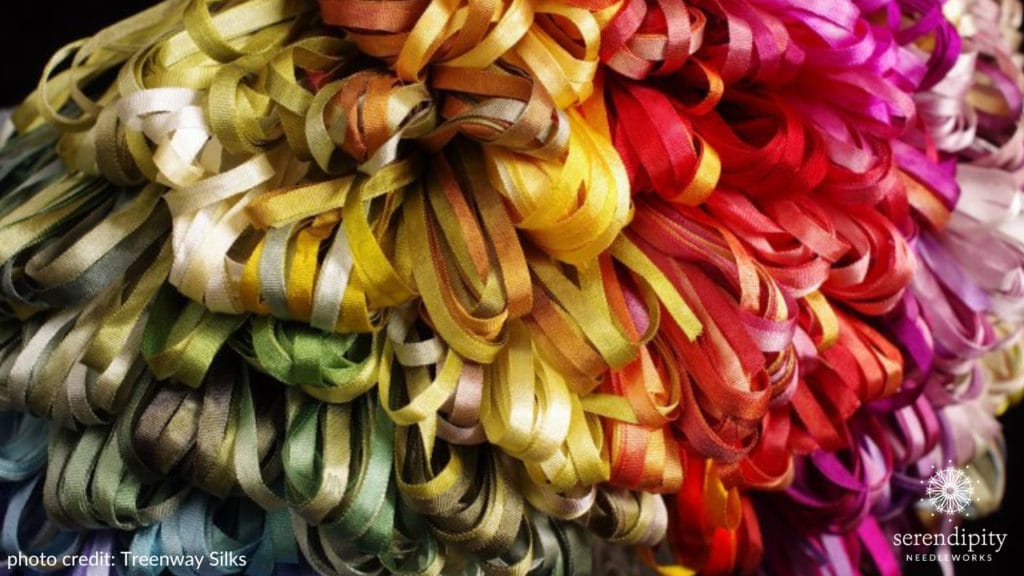If you’ve ever wondered what color fastness means, you’re going to L-O-V-E this week’s blog post. In fact, we’re going to do a deep dive into what color fastness means and why it’s important to understand it. Sound good? Terrific – let’s dive in!
Let’s start with what color fastness is…
In a nutshell, color fastness is a thread’s ability to resist fading or bleeding when exposed to water and/or light. We’re going to stick with color fastness as it pertains to water here, though. 😉
When a thread is color fast, that means the dye is stable and won’t leach out under normal conditions.
And now, I’ll bet you’re wondering – what are normal conditions? Well, my friend, that’s a great question!
Here are a few scenarios I consider normal…
- wet blocking
- spot cleaning
- overall cleaning
- perspiration
- overturned water glasses at the dining table
Before you begin your project, it’s a good idea to test your threads for color fastness – especially if you’re making a belt, a purse, napkin rings, a tray, or any other kind of item that will get a lot of handling or wear.
How can you test your threads for color fastness?
First, you’ll need these things:
- white paper towels (I prefer Bounty.)
- your chosen needlepoint thread
- warm water
To begin, moisten a paper towel with warm water. Place a length (at least 2″ long) on top of the moistened paper towel. Fold the paper towel over the thread and press down firmly. Let the thread sit for at least 10 minutes, then remove it. Examine the paper towel and the thread. If any dye has bled onto the paper towel, it isn’t color fast.
Remember – you’ll need to repeat this process for every thread that you use, too, because color fastness can vary from thread to thread. Heck, it can even vary between dye lots of the same kind of thread! (And it’s always better to be safe than sorry. ;))
Wondering what to do if you find that some of your threads are not color fast? Well, you have two options – you can try a different thread or you can rinse the thread you already have to remove the excess dye. (NOTE: rinsing any thread to remove the excess dye may result in the thread color not being as vibrant.)
Setting the dye in thread
You may have heard about using salt and/or vinegar to “set” the dye in thread, but I don’t recommend relying on that to work. What is actually happening when you use either of those methods is this: the excess dye is leeching out into the water when you soak the thread. Neither salt nor vinegar is a dye fixative.

So – where does that leave you when it comes to the color fastness of your needlepoint threads?
If your finished project will not receive a lot of wear or handling, color fastness is not a “game-changer”. You will, however, want to ask your finisher which blocking method he/she will use when you send your piece off to be transformed into its final state. (Hint: you DO NOT want the finisher to use the wet blocking method – including steam – if your threads are not color fast, or if you didn’t test them for color fastness before stitching your canvas.) You’ll also need to be careful when cleaning your needlepoint if you don’t know whether or not your threads are color fast.
And, when it comes to stitching any items that will be well loved, you definitely want to make sure that the threads you use are color fast. 😉
Alrighty my friend, that’s all for now.
Thank you for stopping by! Have a terrific rest of your week and, until next time…
Happy stitching!!
XOXO!







Super helpful before I get ready to stitch an ornament that will go on the back of a jean jacket…. Thanks
I’m so glad you found the info useful, Susan!
XOXO!
Ellen
How can I buy your hoop holder you designed?
Hi Kandra
I sure wish I could say that I designed that frame stand, but I didn’t. 😉
You should be able to purchase them through your local needlepoint shop. If you don’t live in a town with a shop, my best suggestion is to reach out to Kathy Balthrop at The Stitching Studio in Richmond, Virginia or Saira Himelfarb at Chandail Needlework in Houston, Texas. 🙂
Happy Stitching…
XOXO!
Ellen